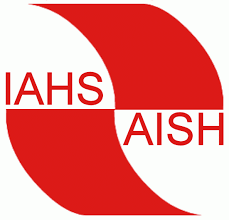Oral programme W7
|
W7 Extreme events: links between science and practice |
| Convener: Ennio Ferrari | Co-Conveners: David Hannah , Maria-Carmen Llasat , Enrica Caporali , Radu Drobot , Yves Tramblay , Elena Volpi , Abou Amani , Anil Mishra |
|
Oral programme
/ Tue, 11 Jul, 08:30–17:10
/ Room Woodrooms
Poster programme
/ Attendance Tue, 11 Jul, 15:50–17:30
/ Room B2
|
|
Tuesday, 11 July 2017 Room Woodrooms Chairperson: Ennio Ferrari |
|
| 08:30–08:40 |
Introduction to the session
|
|
Analysis of impacts of climate and land-use change on extreme events
|
|
| 08:40–09:00 |
IAHS2017-283
Limits to apply new scientific tools for flood design in practice Andreas Schumann and Svenja Fischer |
| 09:00–09:20 |
IAHS2017-91
Hydrological response and impact pathways of the 2015/16 El Niño in eastern and southern Africa Christian Siderius, Kate Gannon, Mukelabai Ndiyoi, Alfred Opere, Nnyaladzi Batisani, Daniel Olago, Joanna Pardoe, and Declan Conway |
| 09:20–09:40 |
IAHS2017-100
Climate change impacts on extreme rainfalls, discharges and floods in Mediterranean mesoscale catchments Antoine Colmet-Daage, Emilia Sanchez-Gomez, Sophie Ricci, Cécile Llovel, Valérie Borrell-Estupina, and Eric Servat |
| 09:40–10:00 |
IAHS2017-140
Modeling monetary damages due to floods and the impact of hydrologic uncertainty Lucy Marshall, Syed Abu Shoaib, and Ashish Sharma |
|
Coffee/tea break
|
|
|
Integrated approaches for coping with water-related risks
|
|
| 10:40–11:00 |
IAHS2017-330
RAMSES: a multiscale system for railway hazard mitigation. First results and perspectives. Salvatore Gabriele, Sante Laviola, Baldini Luca, Chiaravalloti Francesco, Stefano Federico, Marceollo M. Miglietta, Lisa Milani, Antonio Procopio, Rago Valeria, Nicoletta Roberto, Alessandro Tiesi, Mario Agostino, Raffale Niccoli, Sergio Stassi, and Giulio Iovine |
| 11:00–11:20 |
IAHS2017-354
How sustainable is reactive gravel management following floods? New data from the UK Cumbria Floods of 2015 suggests not. George Heritage, Neil Entwistle, and David Milan |
| 11:20–11:40 |
IAHS2017-365
Closing the gap between flood wave forecasting and damage prediction in support to decision. (withdrawn) Fabio Castelli, Giulia Ercolani, and Chiara Arrighi |
| 11:40–12:00 |
IAHS2017-71
Optimal investment and location decisions of a firm in a flood risk area using Impulse Control Theory Johanna Grames, Dieter Grass, Peter Kort, and Alexia Prskawetz |
| 12:00–12:20 |
IAHS2017-152
An integrated system for monitoring and early warning of rainfall-triggered landslides Pasquale Versace, Giovanna Capparelli, Davide Luciano De Luca, and Ennio Ferrari |
|
Lunch break
|
|
|
Advances in statistical and stochastic analysis of extreme events
|
|
| 13:40–14:00 |
IAHS2017-61
Causes and consequences of catastrophic torrential floods in West Serbia in May 2014- a case study of Krupanj municipality Ratko Ristic, Stanimir Kostadinov, Vukasin Milcanovic, Boris Radic, Sinisa Polovina, Ivan Malusevic, and Miodrag Trifunovic |
| 14:00–14:20 |
IAHS2017-86
Design of drainage systems for extreme rainfalls using a CDS - IUH approach Dan Rosbjerg and Henrik Madsen |
| 14:20–14:40 |
IAHS2017-335
Flood frequency estimation by national-scale continuous hydrological simulations: an application in Great Britain. Giuseppe Formetta, Lisa Stewart, Vicky Bell, and Nick Reynard |
| 14:40–15:00 |
IAHS2017-338
Investigation of the flood safety in the Savinja River catchment in Slovenia, Europe (withdrawn) Nejc Bezak, Mojca Šraj, Mitja Brilly, and Andrej Vidmar |
| 15:00–15:20 |
IAHS2017-221
Estimation of rainfall area-intensity-duration-frequency curves from weather radar data Uwe Haberlandt and Christian Berndt |
|
Coffee/tea break
|
|
|
Knowledge building strategies for improving local resilience
|
|
| 15:50–16:10 |
IAHS2017-212
Urban flash floods modelling in Mzuzu City, Malawi (withdrawn) Chikumbutso Liwonde and Webster Gumindoga |
| 16:10–16:30 |
IAHS2017-231
Developing local level resilience through experimental knowledge building: an interdisciplinary approach to coping with drought in rural Southern Africa Eugine Makaya, Melanie Rohse, Sally Rangecroft, Anne Van Loon, Rosie Day, Stephen Birkinshaw, Coleen Vogel, Lyla Mehta, and Lindsey McEwen |
| 16:30–16:50 |
IAHS2017-258
Assessing the current capacity of water institutions in rural Rumphi to deal with floods and drought Esther Nia Gondwe, Miriam Joshua, and Cosmo Ngongondo |
| 16:50–17:10 |
Final discussion
|
